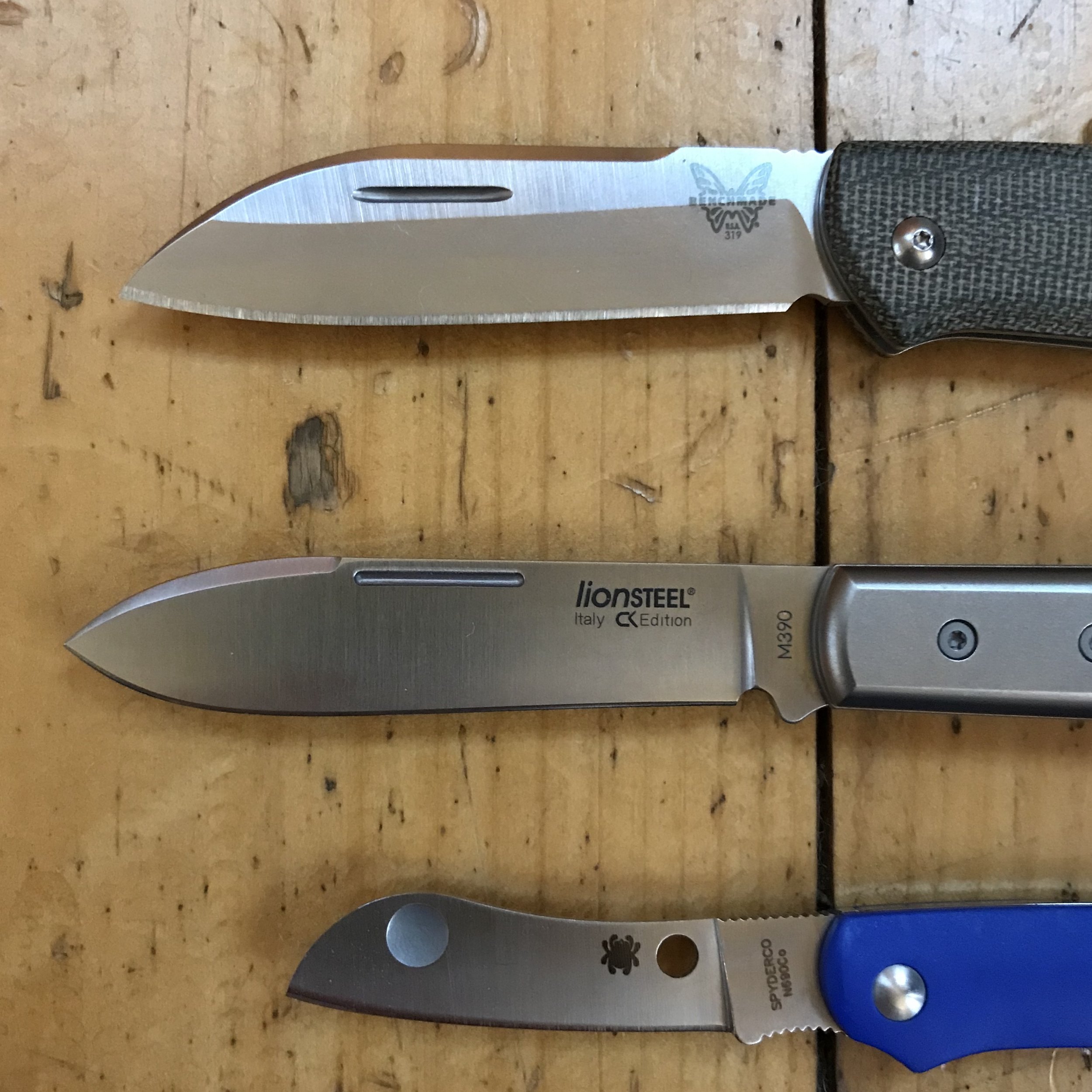Steel Grade Cards
I am going to do a series of articles on steels. I have wanted to do this for a long time, something like a steel diary, but the more steels I use the more difficult this has become. Instead, I am going to do a quick hit style approach to steels and evaluate them subjectively—what I am going to call “Steel Grade Cards.” This is not something that should be seen as an alternative to CATRA testing or other forms of scientific testing. It is certainly less scientific than Cedric and Ada’s work. Instead, think of this as my opinion on a specific steel based on experience—more case study than ABX testing.
I am going to use a 20 point scale not only because it matches what I am already doing in reviews, but also because I conceived of this prior to picking a scale as having four components with below, average, and above average ranks. A little fussing and you get five performance levels over four categories for 20 points.
Before I rate a steel, I want to have a good deal of experience with it. At a minimum, I want to have used it for more than a month and both stropped and sharpened it. Aaron Shapiro is correct in saying that you don’t know a steel until you sharpen it and I agree. Obviously, I’d prefer experience with the steel over a wide variety of knives from a wide variety of makers. In some cases, such as INFI, that is not possible. In others, the performance between companies is striking, such as Leatherman’s 420HC and Buck’s 420HC.
Here are the four categories:
Hardness/Edge Retention
This is a measure of edge holding ability, which, is, in many ways a steel’s tendency to not roll and edge or go dull. Hardness usually comes at the cost of a tendency to chip, that is hard steels tend to chip instead of roll.
Well Below Average: 1095 (as usually treated), 420HC, 7Cr13MoV
Below Average: VG-10, AUS8, 440C, 8Cr13MoV
Average: S35VN, S30V
Above Average: M390/20CV/CTS-204p, 3V, CTS-XHP
Well Above Average: ZDP-189, Maxamet, REX 121
Toughness
This is a measure of a steel’s ability to resist chipping. Tough steels will dull or roll an edge before they chip.
Well Below Average: Ceramic
Below Average: S30V, VG-10
Average: S35VN, AUS 8
Above Average: 1095 (as usually treated), AEB-L, CTS-XHP
Well Above Average: INFI, 3V
Corrosion Resistance
This is a steel’s ability to resist coloration and pitting due to exposure to elements such as water, salt water, sweat, acidic or basic foods, and the like.
Well Below Average: Maxamet
Below Average: ZDP-189, 3V, 8Cr13MoV
Average: VG-10
Above Average: 420HC, 440C, M390/CTS-204p/20CV
Well Above Average: LN 200C, H1
Sharpenability
This is not so much a working property of steel, but how ease the steel is to maintain. Ideally, you will get a steel that comes back to a razor edge with stropping after to moderate use. A full sharpening should correct any minor edge defects.
Well Below Average: ZDP-189, S30V
Below Average: 3V, VG-10
Average: 8Cr13MoV, 440C, S35VN
Above Average: M390/CTS-204p/20CV, CTS-XHP
Well Above Average: INFI, 1095 (as usually treated)
I will provide an Overall Score, much like a review. In the conclusions section I will specifically address price, as, in many ways, that is a feature of steel—M4 is killer because its insane price to performance ratio. In addition to this information, each Steel Report Card will have four standardized pieces of data: a history and any notable heat treats or variations, a link to a steel composition chart, a link to a datasheet, and finally a price per cubic inch (this is necessary because size variation in available stock). As most people are aware, powder steels will always perform better, on average, than non-powder steels unless there is some special case, like W2 for hamons or Cru Forge V for forging.
Just I as wrote this up, a longtime reader and a really smart guy, Chad S. created a graph to compare steels visually using data generated by the Creely Steel folks over on their site. What he did was take data from various measurements and the create a geometric mean for edge retention, toughness, and corrosion resistance. Then he put them into graph form:
Here is Chad S's chart broken down by the three categories:
I have no real qualms here as if you factor in edge retention, toughness, and corrosion resistance, it does seem like CTS-XHP is a great all around steel. I don't think that I'd rate S30V that high, but you get the idea. Chad warns that the statistical method he uses heavily values good all-around performers and heavily penalizes specialized steels—that is steels that do one thing really well (as you can see the hardness specialists like Super Blue, White Steel, and HAP 40 do poorly here). So if you are numbers nerd and a steel snob, enjoy this graph.
Pete was kind enough to point me in the direction of his OWN version of a steel traits chart (handy enough and entirely coincidentally, he chose the four attributes I did):
First up INFI’s steel grade card.




